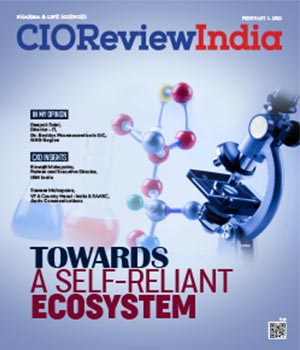
Next-Generation Commercial Data Management Systems For Biopharmaceutical
Ashwin Athri, SVP, Precision for Value | Monday, 21 October 2019, 06:16 IST
 How often is there a business-critical problem statement that requires analysis of various data assets that you have invested time and money to procure and manage, and you hear from the team that:
How often is there a business-critical problem statement that requires analysis of various data assets that you have invested time and money to procure and manage, and you hear from the team that:
• The data don’t really talk to each other that way
• You need to hire consultants to make sense of the data
• The data aren’t organized in a way to answer that question
• It’s going to take a few months to get the system to generate the results the way you need to
The speed to insight is one of the most common challenges decision makers face in an age where we are inundated with data. Teams often spend more time cleaning and organizing the data assets than generating insight from them. Why is it that when we have infrastructure to store large data and enterprise platforms for visualization and reporting, as well as advanced analytic teams, that we still struggle to meet these needs?
“The discipline of master data management (MDM) has gained momentum in biopharma recently”
The answer may actually lie in small data.
Counterintuitive?
The discipline of master data management (MDM) has gained momentum in biopharma recently. There is a lot of activity in the space, with companies developing sophisticated systems and IT departments implementing the solution across organizations.
Across the Biopharmaceutical industry, the data assets that are commonly leveraged for commercial business insights and analytics include:
• Third-party: Prescriptions, medical claims, patient longitudinal, formulary coverage and restrictions, shipment, distribution
• Second-party: Contract rebate submissions, specialty pharmacy, copay card redemption, EMR
• First-party: HUB, CRM, media; such as web, mobile, email, medical devices, sales, and territory alignments
There are a few key aspects of the data assets, common to all manufacturers, which need to be organized across these types of data sets to enable insight generation and innovation. A few of these parameters that we need to master and leverage for integration are:
• Payers: PBMs, health plans, employers, unions
• Providers: Hospitals, practices, IDNs, infusion centers, cancer centers
• HCPs: Primary address, employment, affiliations
• Products: Market baskets, indications, brands
• Treatments: NDC, ICD, HCPCS
If every manufacturer sets out to solve the same problem across the same data assets, the industry is investing on the same solution multiple times on the same outcome, which does not give any manufacturer a decisive competitive advantage. This is not a very efficient use of capital.
A traditional approach to an MDM solution is to use a sophisticated software system that figures out the data map as you continue to feed it data. There are a couple of challenges that this presents, including that these systems are often developed pan-industry, and they come loaded with features and capabilities that the teams barely use as they are not mission critical. These over-engineered solutions are then leveraged to solve a problem statement that should, by nature, be a solved problem. Running and managing these systems adds another layer to the already large lead-time to insight. We need a better approach. This is not scenario for an engineering solution, this calls for a business solution that leverages available technology.
How payers and providers organize themselves and the capabilities they have, is often independent of a manufacturer’s product or even the therapeutic area. These payers, HCPs, and providers exist and operate in the marketplace regardless of the manufacturer. There is a more universal truth that needs to be first understood and applied before applying the data assets for analysis.
Industry standard reference files, with centralized stewardship and governance that contain business intelligence along with attributes that enrich the data itself, are now necessary to provide the solution than relying on systems to figure it out. These are small data coming to the rescue of the big data mire. Small data helps lakes not become swamps. Small data ensures the ROI on big data investments. Small data ensures the large systems that you built and maintain are leveraged optimally.
Imagine having a turnkey data universe where the payer, provider and HCP names, relationships, and hierarchies are cross-asset, ready with all of all attributes, such as 340B institutions with in-office dispensing, EMR systems used at site of care, employer and unions tied to prescription claims, payer archetypes, and IDN maturity models from the get-go. All of this regardless and independent of the data vendor(s) you choose to purchase from. Now you are ready to derive insights. Now the data asset is primed to provide business intelligence at the speed you need to run the business. Now you can turn data into a competitive advantage.
CIO Viewpoint
Paving the Way for Digital Transformation of...
By Abhrasnata Das
Leveraging IT to ensure Data Integrity in...
By By Deepak Saini,Director – IT,Dr. Reddys Pharmaceuticals LLC, NAG Region
How Is Technology Disrupting The Pharma And...
By Onkar Kapoor, Group CIO & Head IT, Akums Drugs & Pharmaceuticals Ltd.
CXO Insights
The Growing Importance Of Supply Chain...
By Gustavo Salem, Group President, IDEX Health & Science LLC
A Symbiosis Of Technology And Nature
By Amanda L. Goltz, Vice President, Digital Innovation, BTG
Next-Generation Commercial Data Management...



.jpg)
.jpg)
.jpg)





